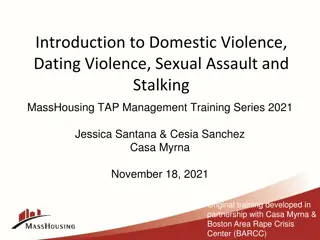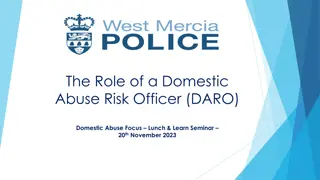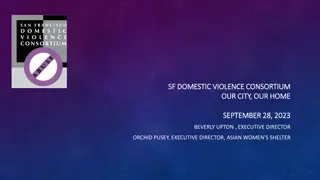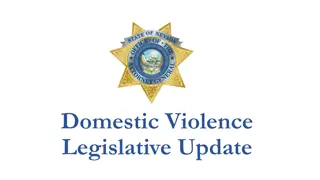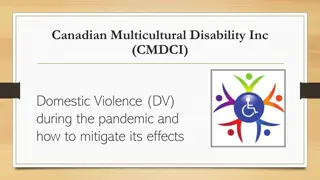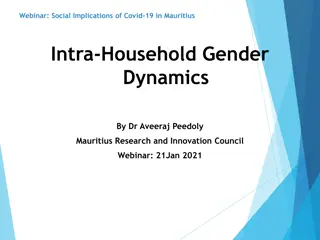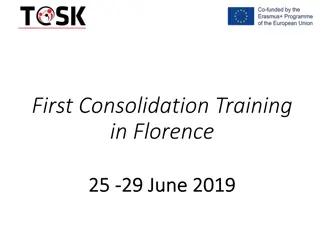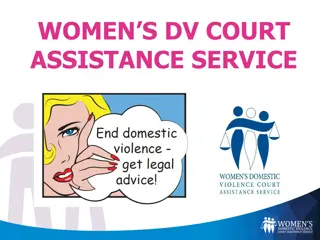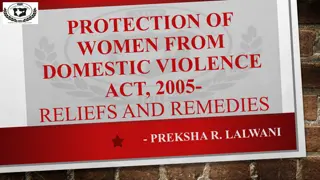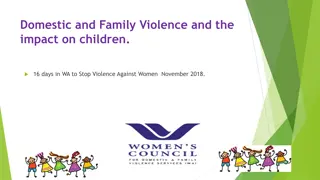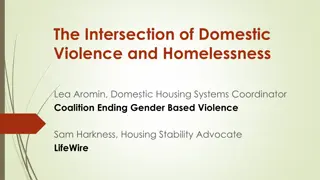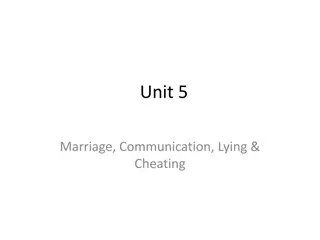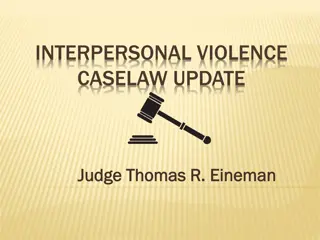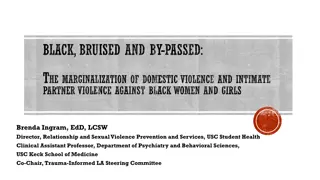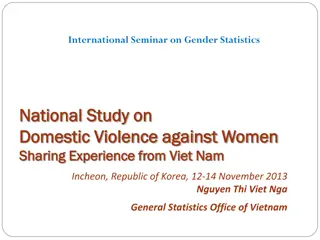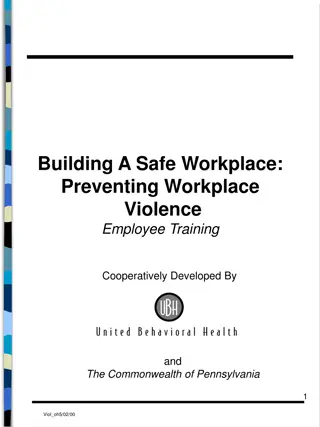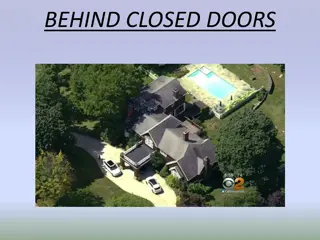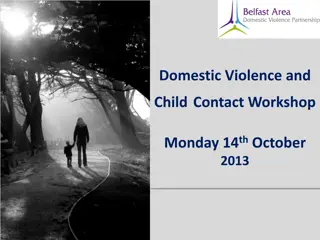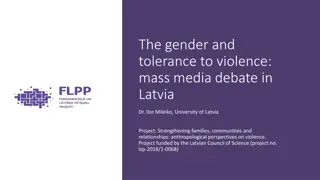Managing Risk in Domestic Violence: The DVPP Approach
In this case study, Zoe and Ben's relationship dynamics are explored as they navigate through the challenges of domestic violence. The use of Domestic Violence Perpetrator Programmes (DVPPs) in managing ongoing risk and supporting victims is highlighted, shedding light on effective intervention strategies and the importance of multi-agency collaboration.
Uploaded on Feb 24, 2025 | 0 Views
Download Presentation

Please find below an Image/Link to download the presentation.
The content on the website is provided AS IS for your information and personal use only. It may not be sold, licensed, or shared on other websites without obtaining consent from the author.If you encounter any issues during the download, it is possible that the publisher has removed the file from their server.
You are allowed to download the files provided on this website for personal or commercial use, subject to the condition that they are used lawfully. All files are the property of their respective owners.
The content on the website is provided AS IS for your information and personal use only. It may not be sold, licensed, or shared on other websites without obtaining consent from the author.
E N D
Presentation Transcript
Case 29 for teaching package on domestic violence Name of presenter and institution
To show the value of Domestic Violence Perpetrator Programmes (DVPPs) in dealing with the cause of the problem
Aims and objectives To show how Domestic Violence Perpetrator Programmes, in association with a support service for partners, can successfully manage ongoing risk in a relationship
Case details Zoe and Ben had approached Relate couples counselling agency, saying they were having difficulties in their relationship but wanted to stay together During the screening process, it became clear that Ben was violent and abusive to Zoe. Ben was referred to a DVPP The ISS* contacted Zoe. Ben s account of the violent incidents was significantly minimised in comparison to Zoe s While on the DVPP, it became apparent that Ben was extremely jealous and controlling and that he coerced Zoe into sex and sexual acts. Ben showed no understanding that this was unacceptable and abusive *Independent Support Service, part of DVPP
Case details The ISS met with Zoe who confirmed that Ben was regularly abusive and continued to be so, she was too ashamed to mention this previously The DVPP worker, the ISS worker and their manager identified a much higher risk than previously assessed Zoe admitted she was very scared of Ben and he d recently started saying that he d never let her go Other agencies through a Multi Agency Risk Assessment Conference (MARAC) were involved and the ISS worker helped her to start planning for her safety
Case details After Ben found out that he had been referred to a MARAC without his knowledge, threatened Zoe, who finally phoned the ISS worker saying she wanted to leave Ben s behaviour and statement about not letting Zoe leave, indicated a high risk of violence or even homicide. The ISS worker arranged a refuge place for Zoe immediately The DVPP worker talked to Ben about letting go and helped him plan strategies to keep him from harming himself, Zoe or others Ben remains a high risk to Zoe and any future partners, but by focusing support on him the DVPP was able to contain the risk he posed at this critical time
Learning points Support for partners, relevant ex-partners, and new partners (ISS), with advocacy, information about the programme and their partners attendance, is an integral part of any DVPP Many men on DVPPs do not initially realise the extent and severity of the abuse which they are inflicting on their partners Coercive control is a form of abuse, which is not physical or sexual, but rather emotional and psychological Victims are often reluctant to admit they are being sexually abused because they are ashamed
Learning points Many different sectors are involved in preventing, detecting and treating domestic violence (police, social services, health, education, probation and housing). Often communication between the sectors is poor, and the contribution that health professionals could make has not been developed and fostered. A MARAC is a way of ensuring good communication Victims of domestic violence are vulnerable while treatment of the perpetrator is ongoing, and support for them is very important Shelters are an important part of domestic abuse services, especially if there is a risk of homicide or serious injury
Background Information There has been growing interest in the involvement of men as perpetrators or potential perpetrators, but conclusive evidence of the effectiveness of perpetrator programmes is still lacking An evaluation tool has been developed and programmes must be properly accredited. It is very important that focusing on men does not overshadow work with women and girls In the UK, funding for Shelters is under threat unless they are shown to accept male victims, who form only a very small proportion of those affected, and are at low risk of violence
References 1. Jewkes R, Flood M, Lang J. From work with men and boys to changes of social norms and reduction of inequities in gender relations: a conceptual shift in prevention of violence against women and girls. Lancet 385, p1580 1589, 2015 http://dx.doi.org/10.1016/S0140-6736(14)61683-4 2. National Institute for Health and Care Excellence (NICE). Domestic violence and abuse: how health services, social care and the organisations they work with can respond effectively. Accessed March 2017. https://www.nice.org.uk/guidance/ph50
MWIAs training module on violence https://mwiaviolencemanual.wordpress.com/


